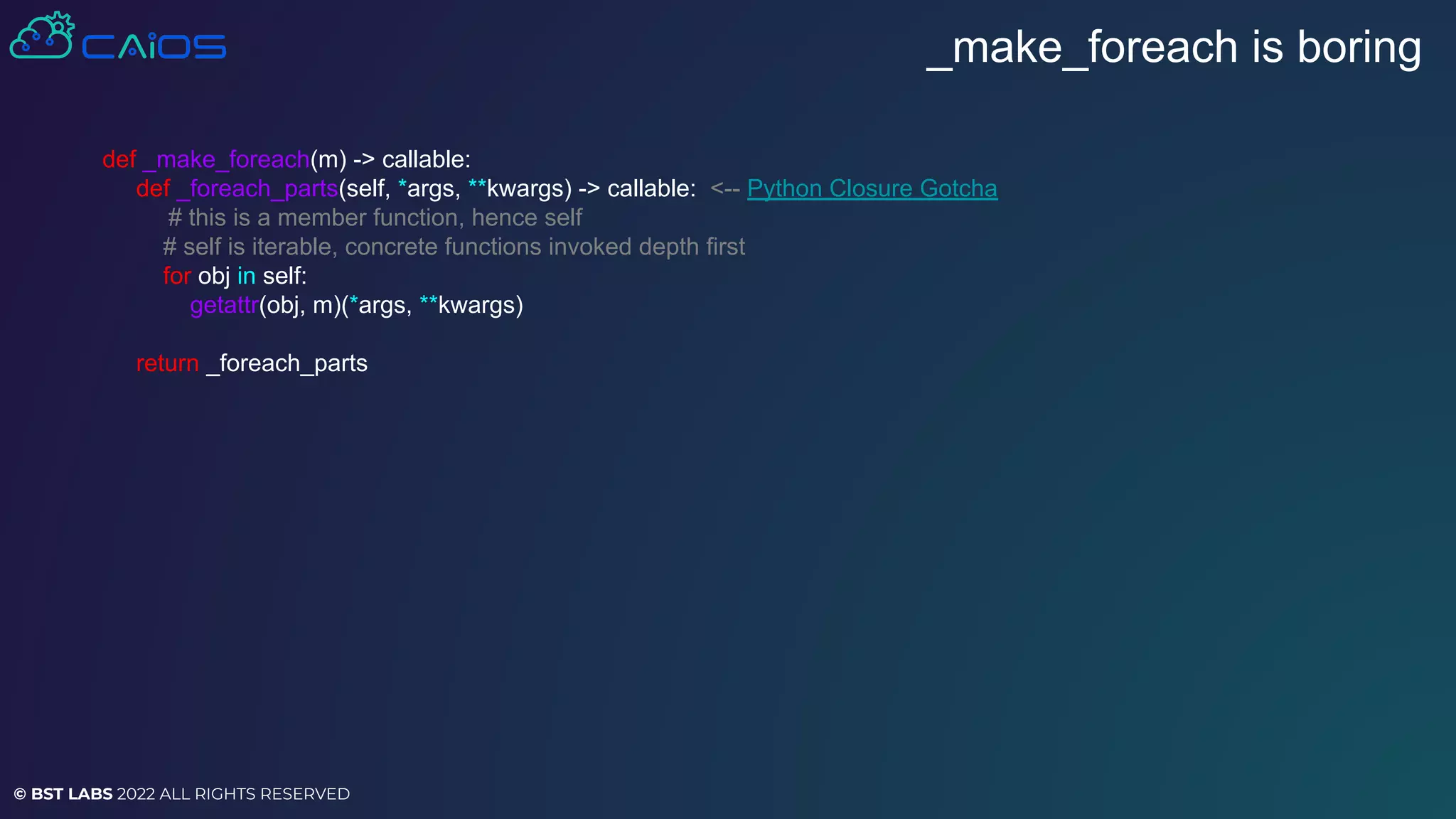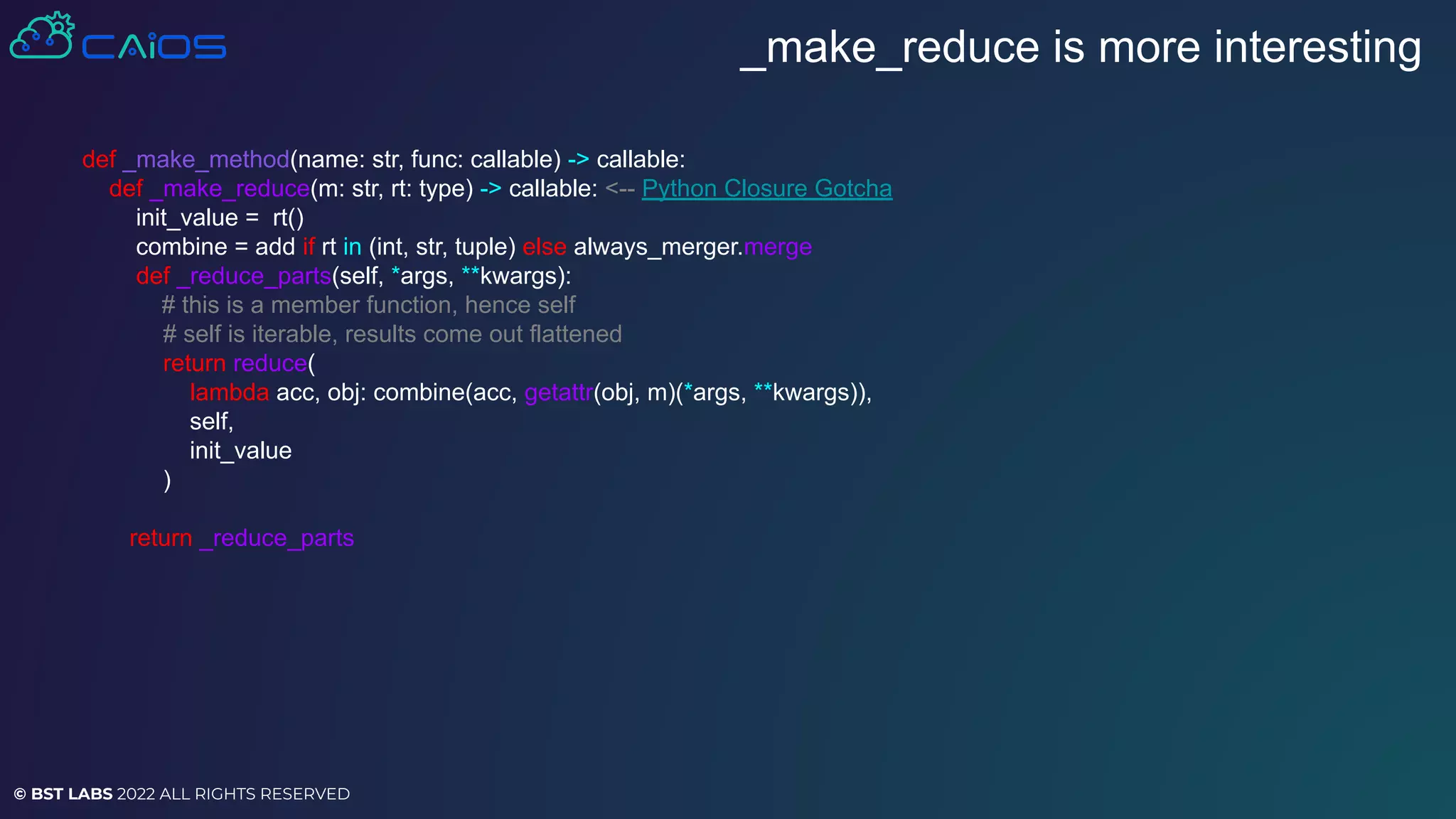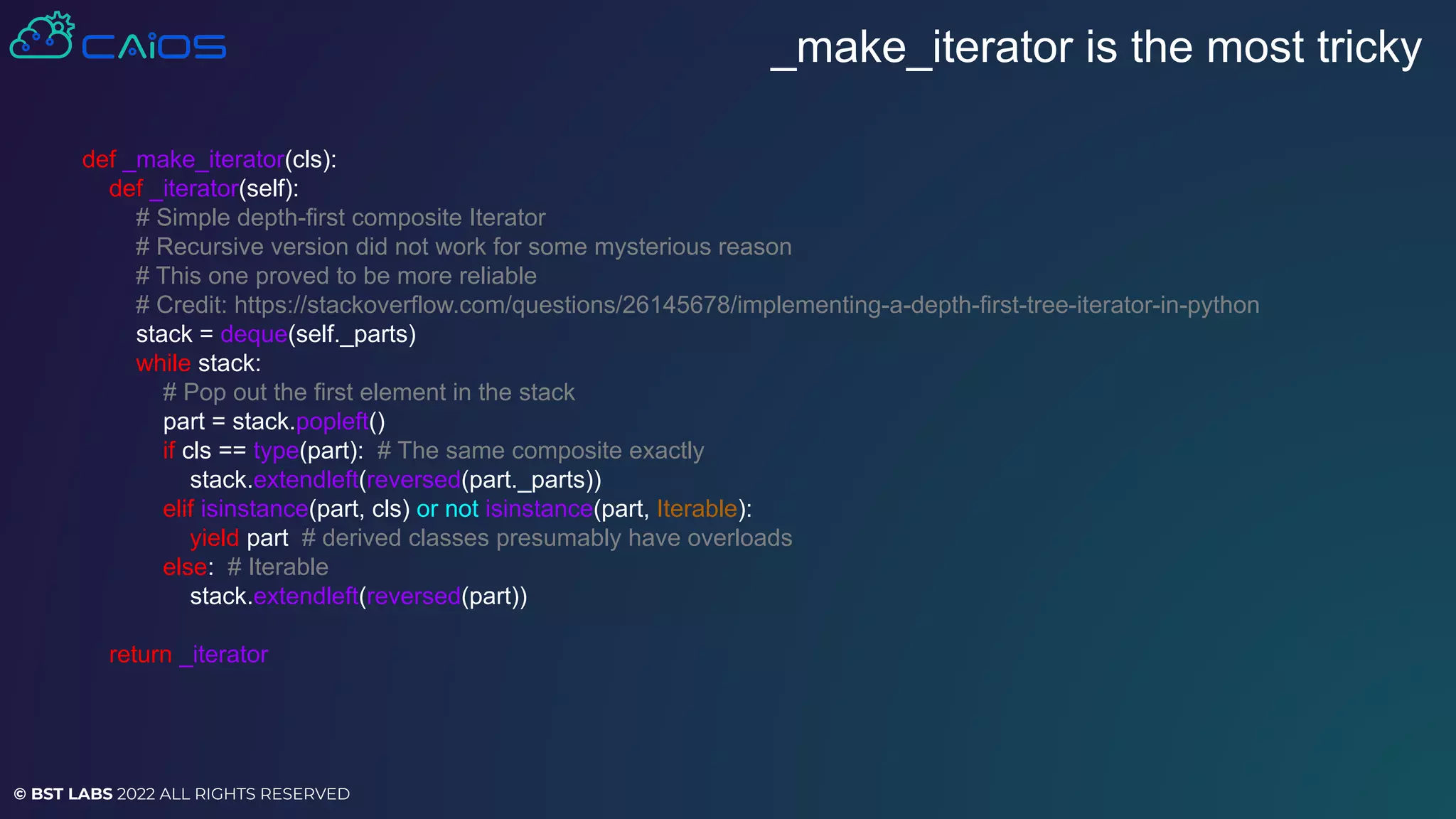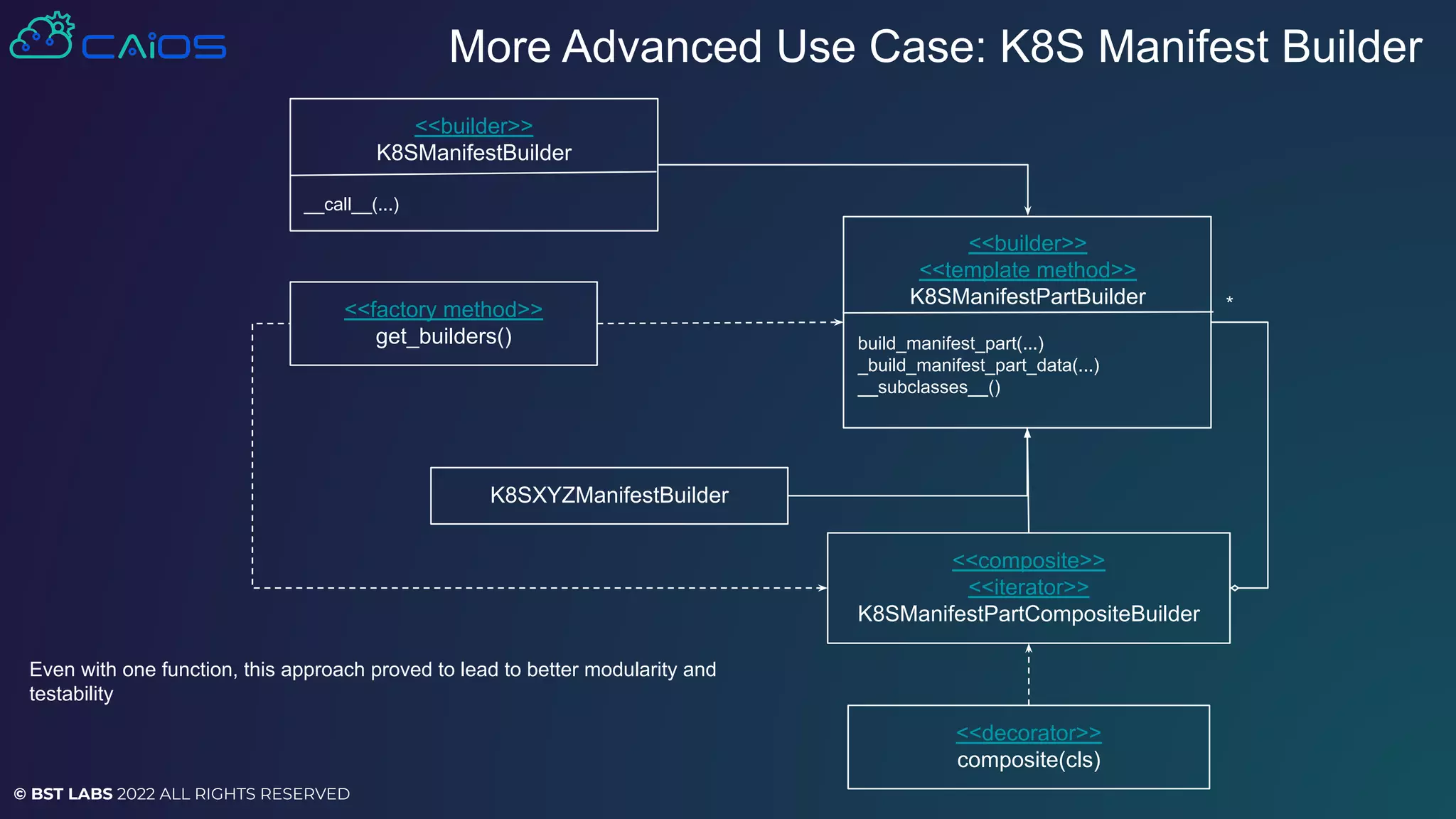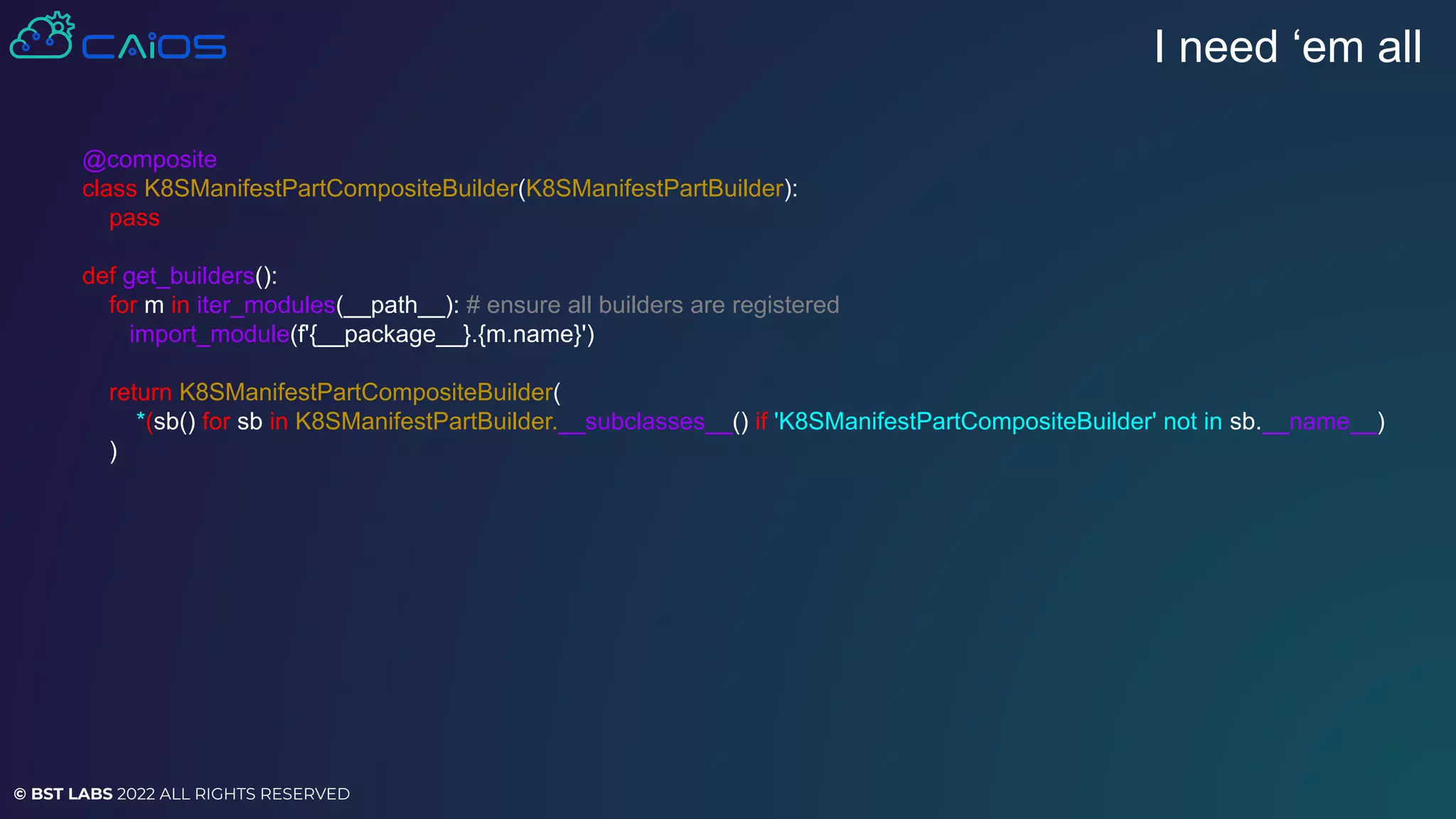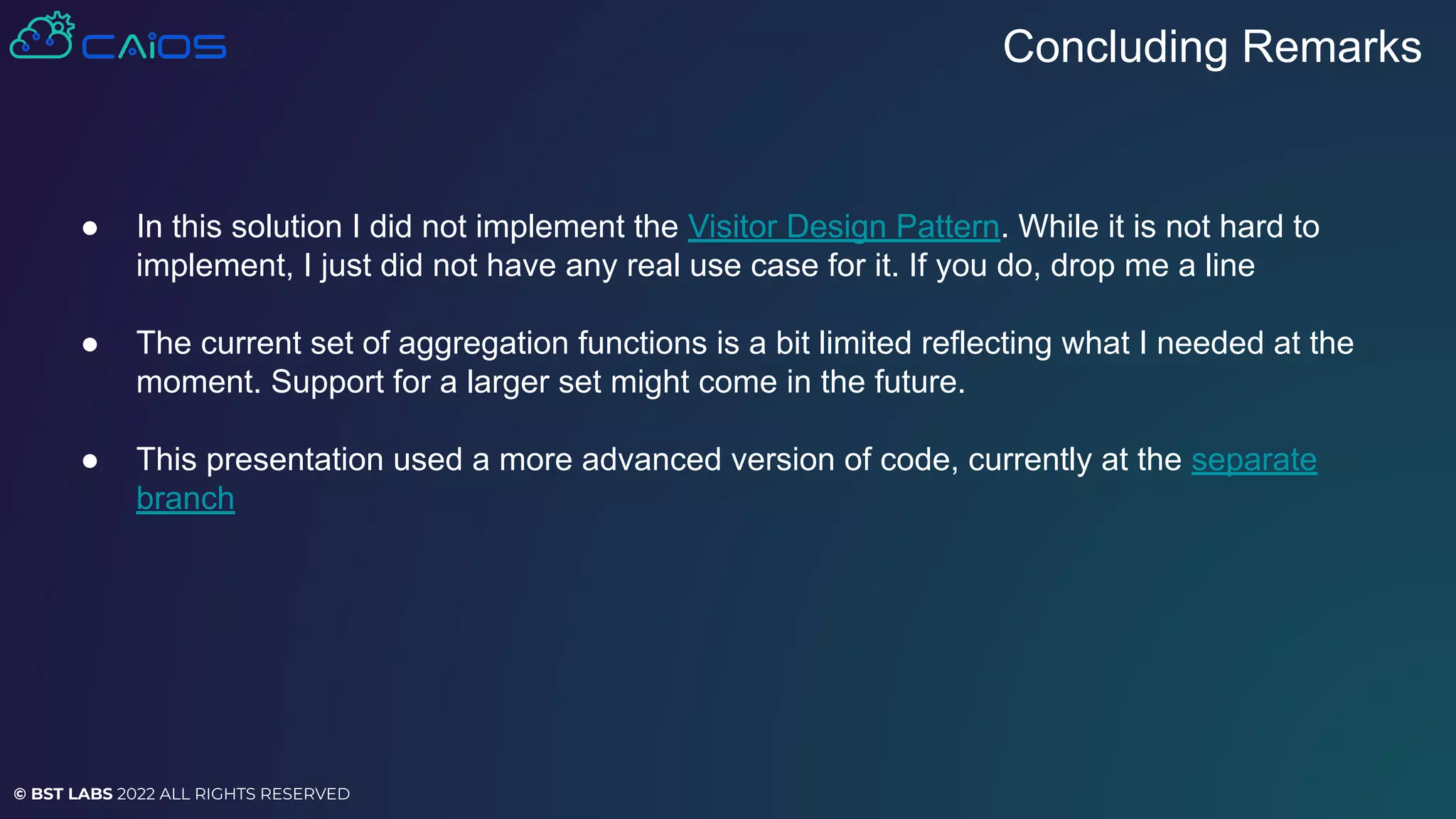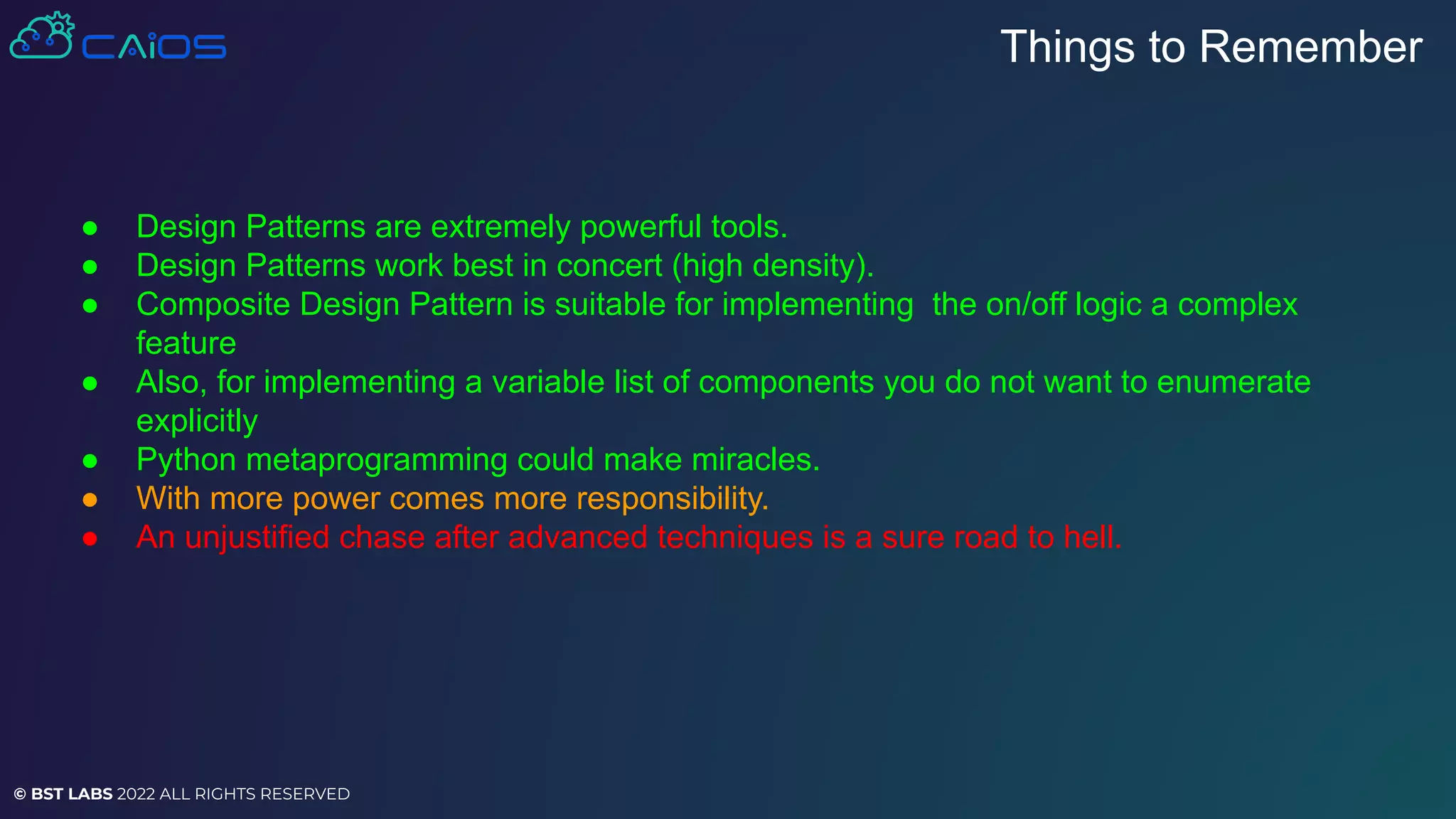This document discusses a generic composite design pattern in Python. It begins with an introduction to design patterns and the composite pattern. It then describes the limitations of a traditional object-oriented implementation of the composite pattern. The document proposes an alternative implementation using decorators, iterators, and other patterns. Code examples are provided to demonstrate how this generic composite pattern can be applied to build templates for cloud infrastructure and Kubernetes manifests.
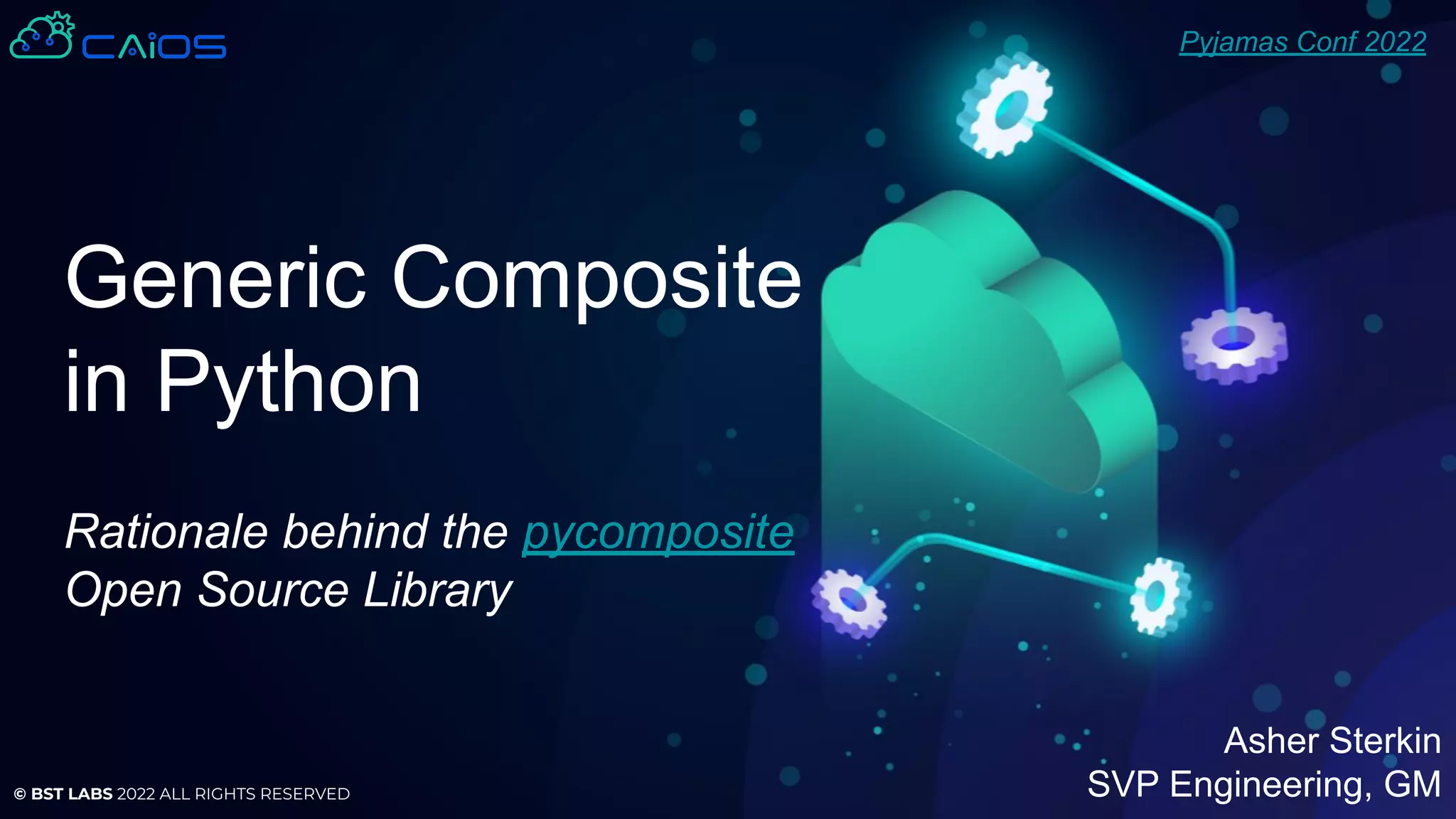

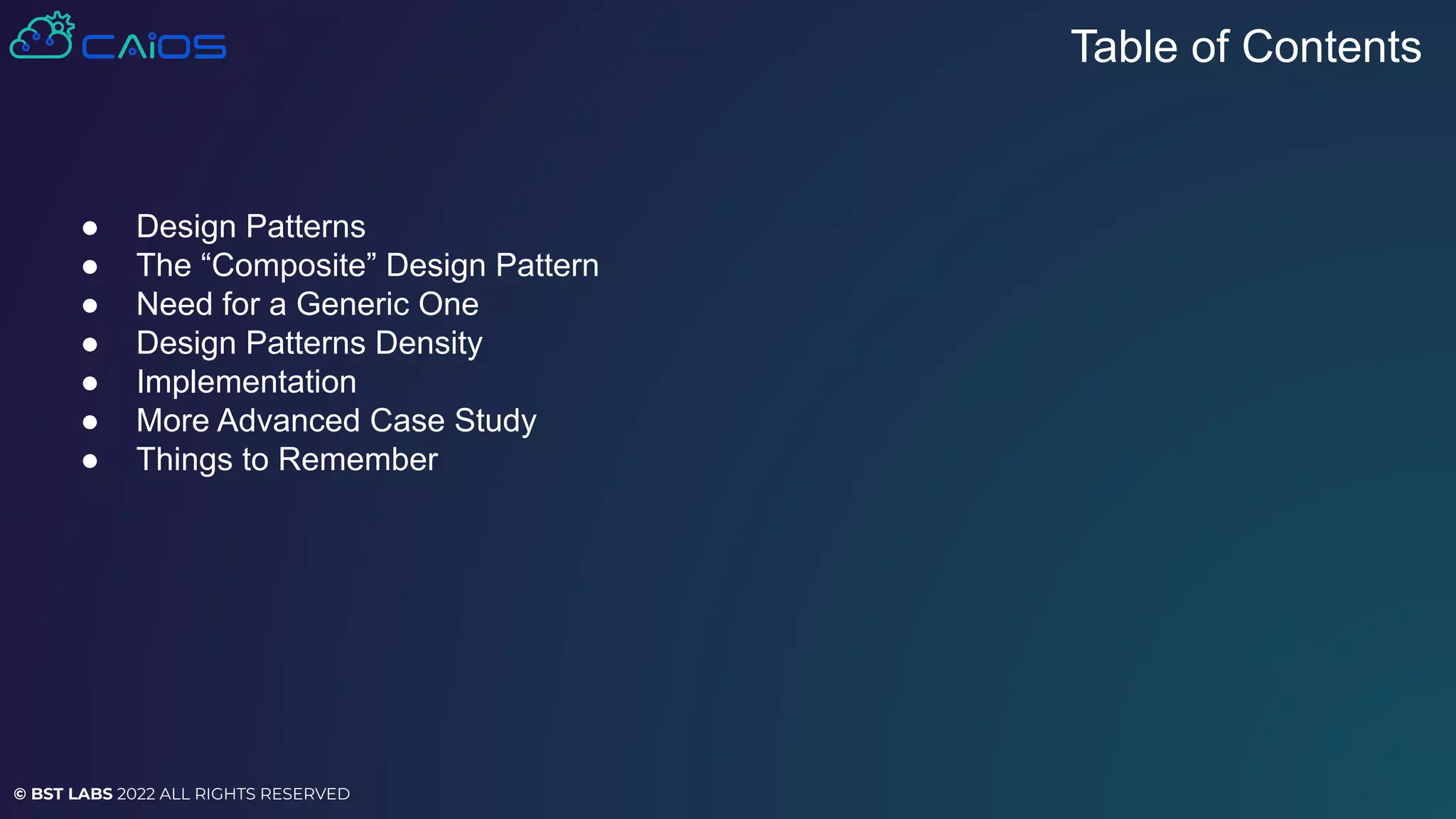
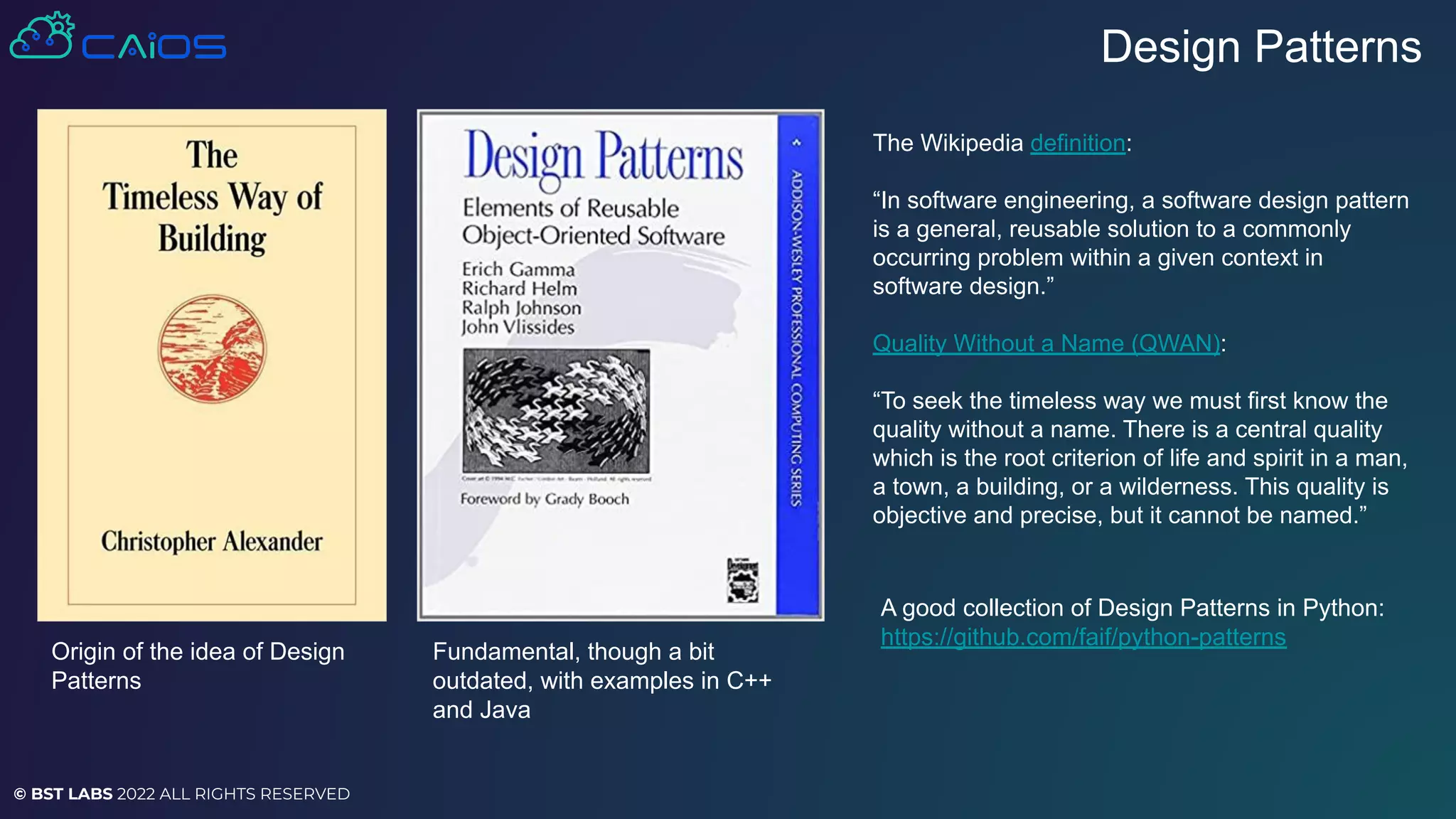


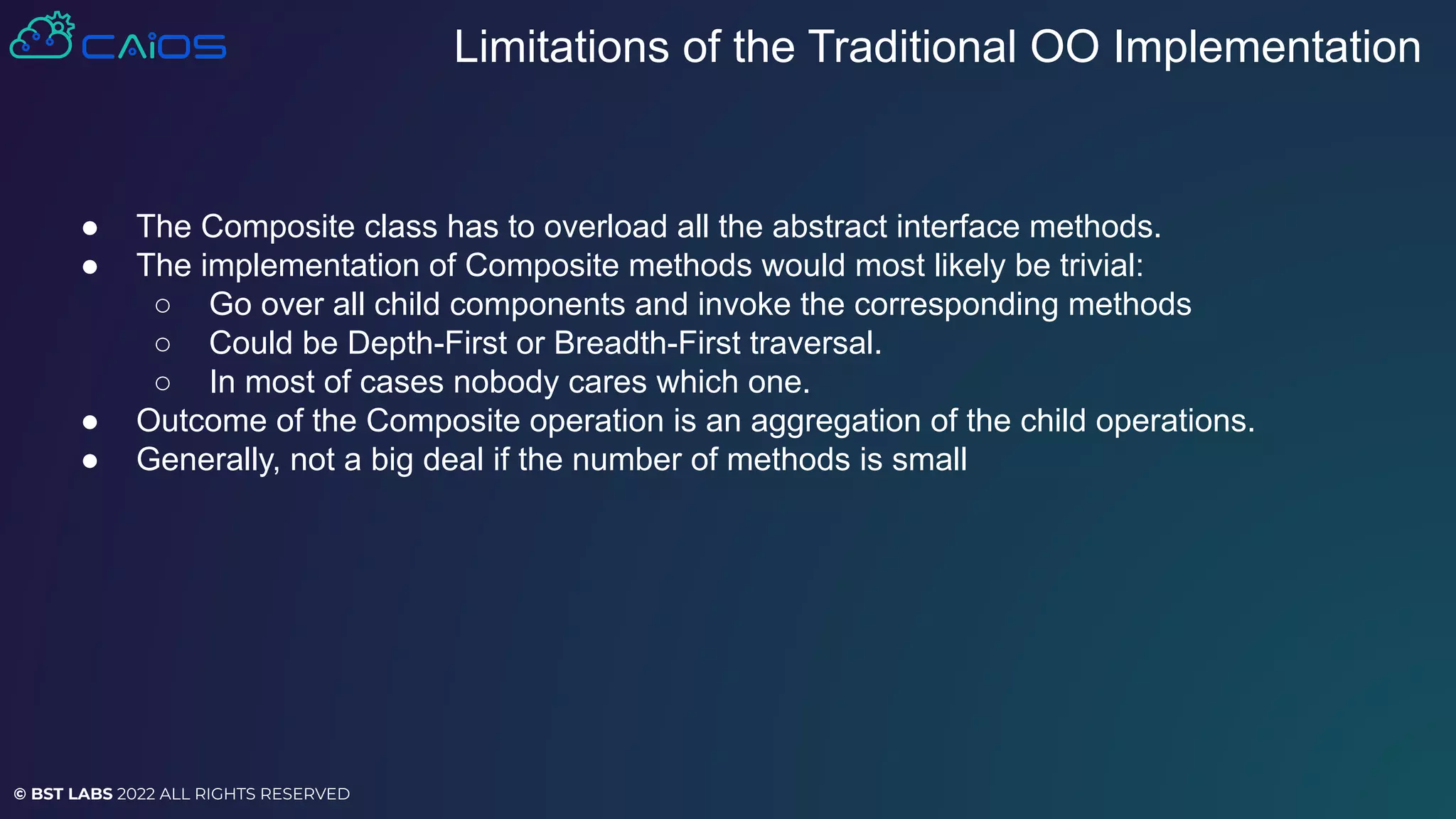
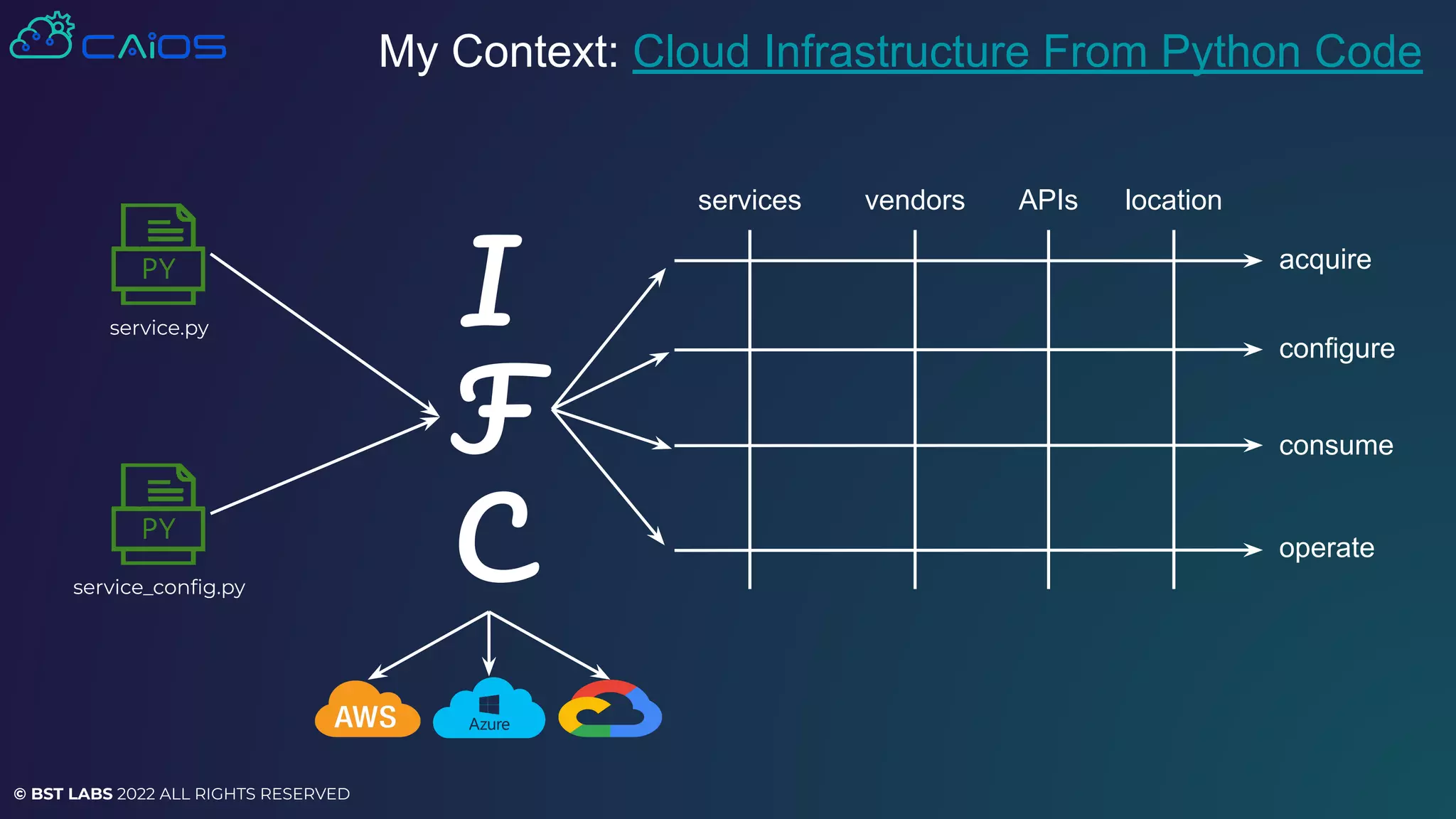
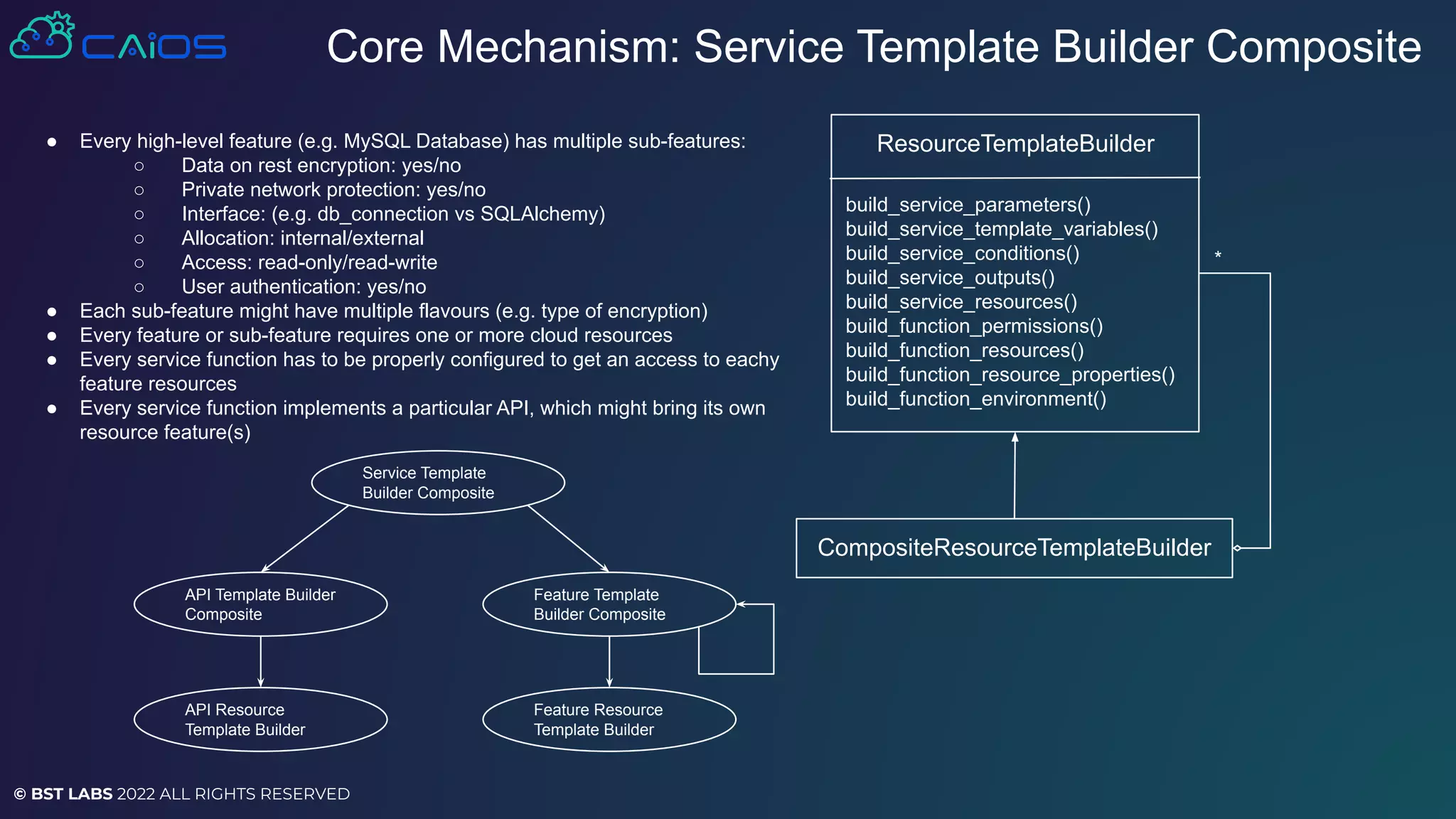
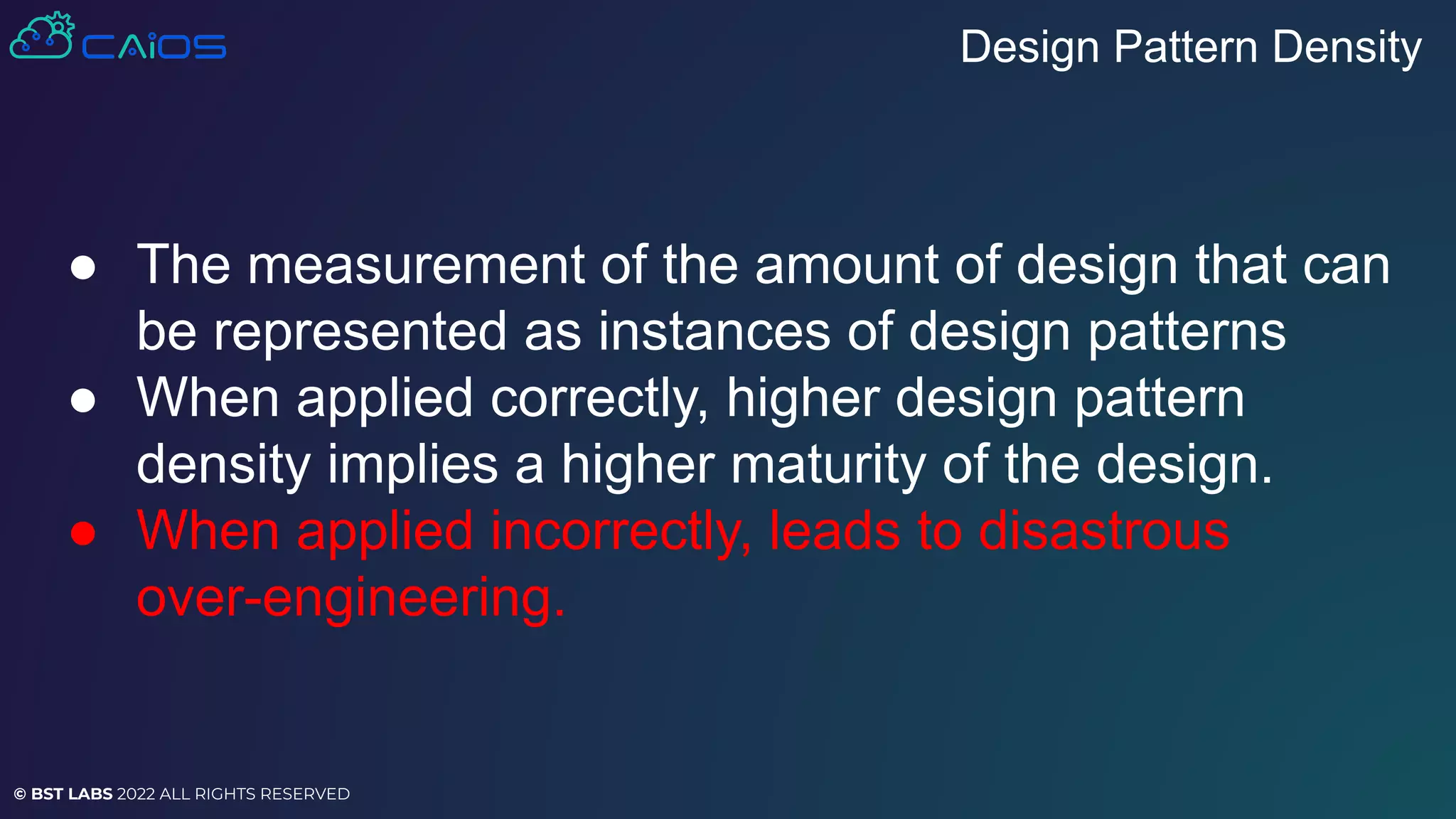
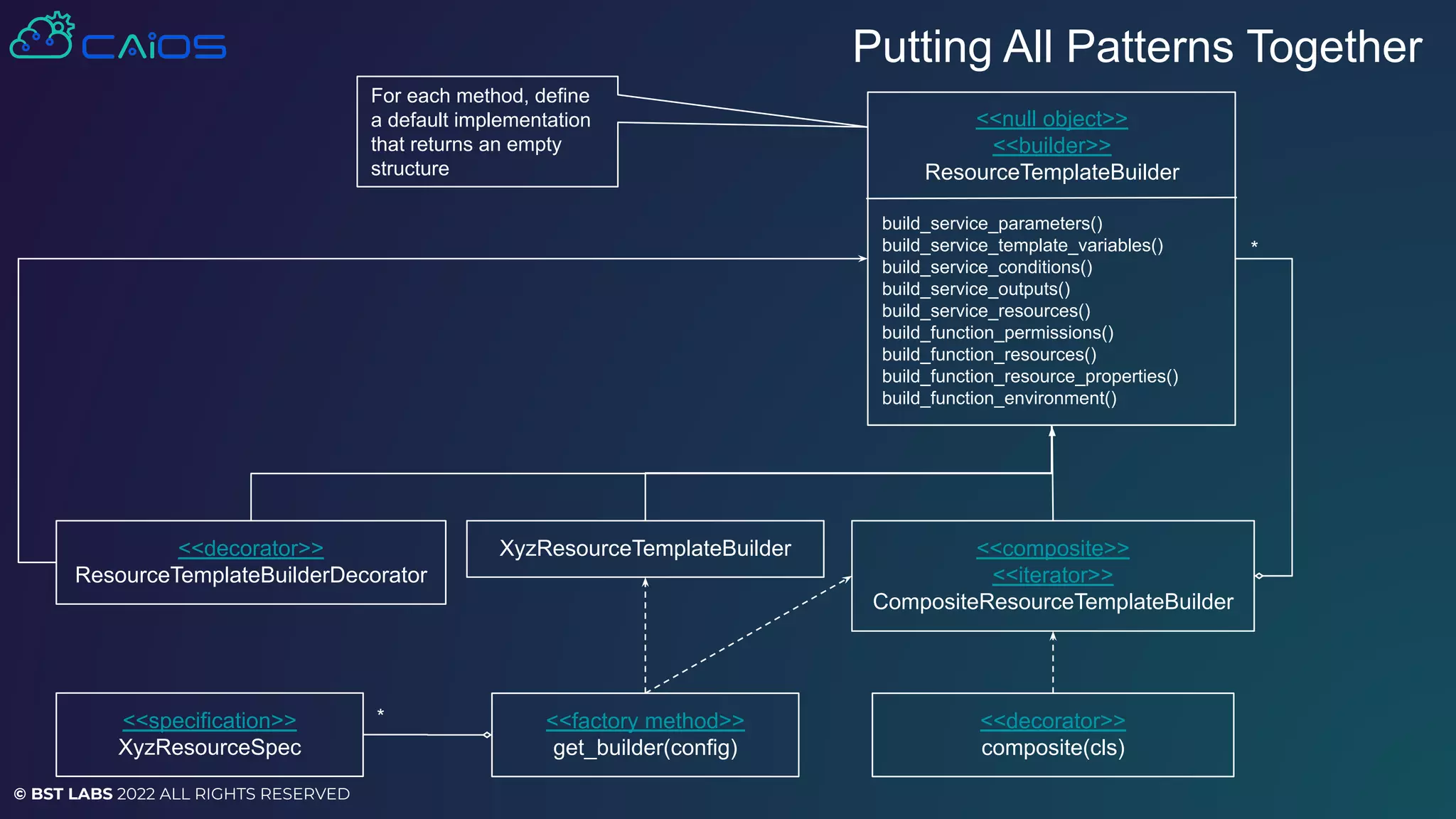
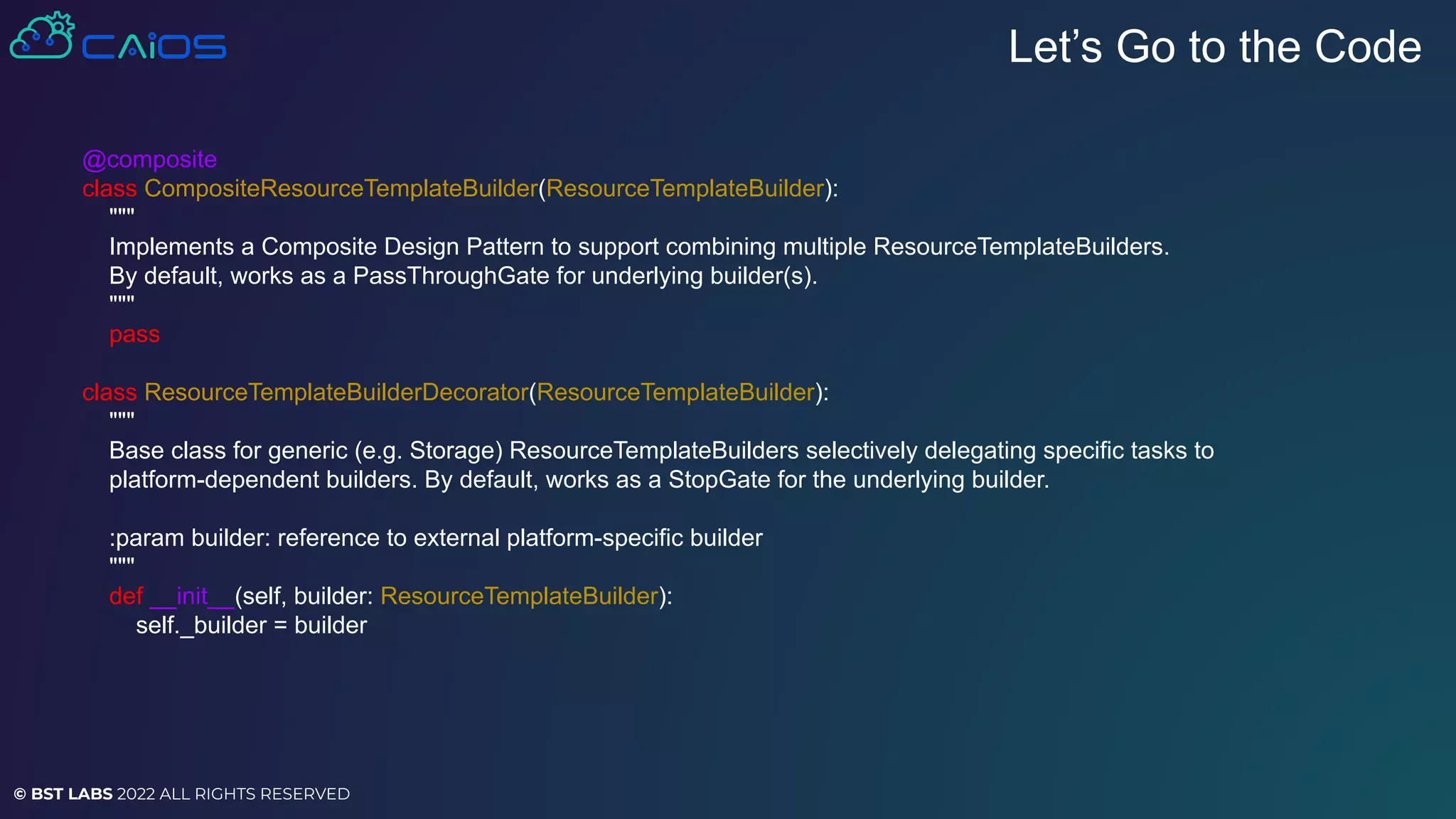
![© BST LABS 2022 ALL RIGHTS RESERVED
composite class decorator
def composite(cls: type) -> type:
"""
Generic class decorator to create a Composite from the original class.
Notes:
1. the constructor does not make copy, so do not pass generators,
if you plan to invoke more than one operation.
2. it will return always flattened results of any operation.
:param cls: original class
:return: Composite version of original class
"""
attrs = {
n: _make_method(n, f)
for n, f in getmembers(cls, predicate=isfunction)
if not n.startswith("_")
}
attrs["__init__"] = _constructor
composite_cls = type(cls.__name__, cls.__bases__, attrs)
composite_cls.__iter__ = _make_iterator(composite_cls)
return composite_cls](https://image.slidesharecdn.com/pyjamas22genericcompositeinpython-221127080423-37f46473/75/pyjamas22_-generic-composite-in-python-pdf-13-2048.jpg)
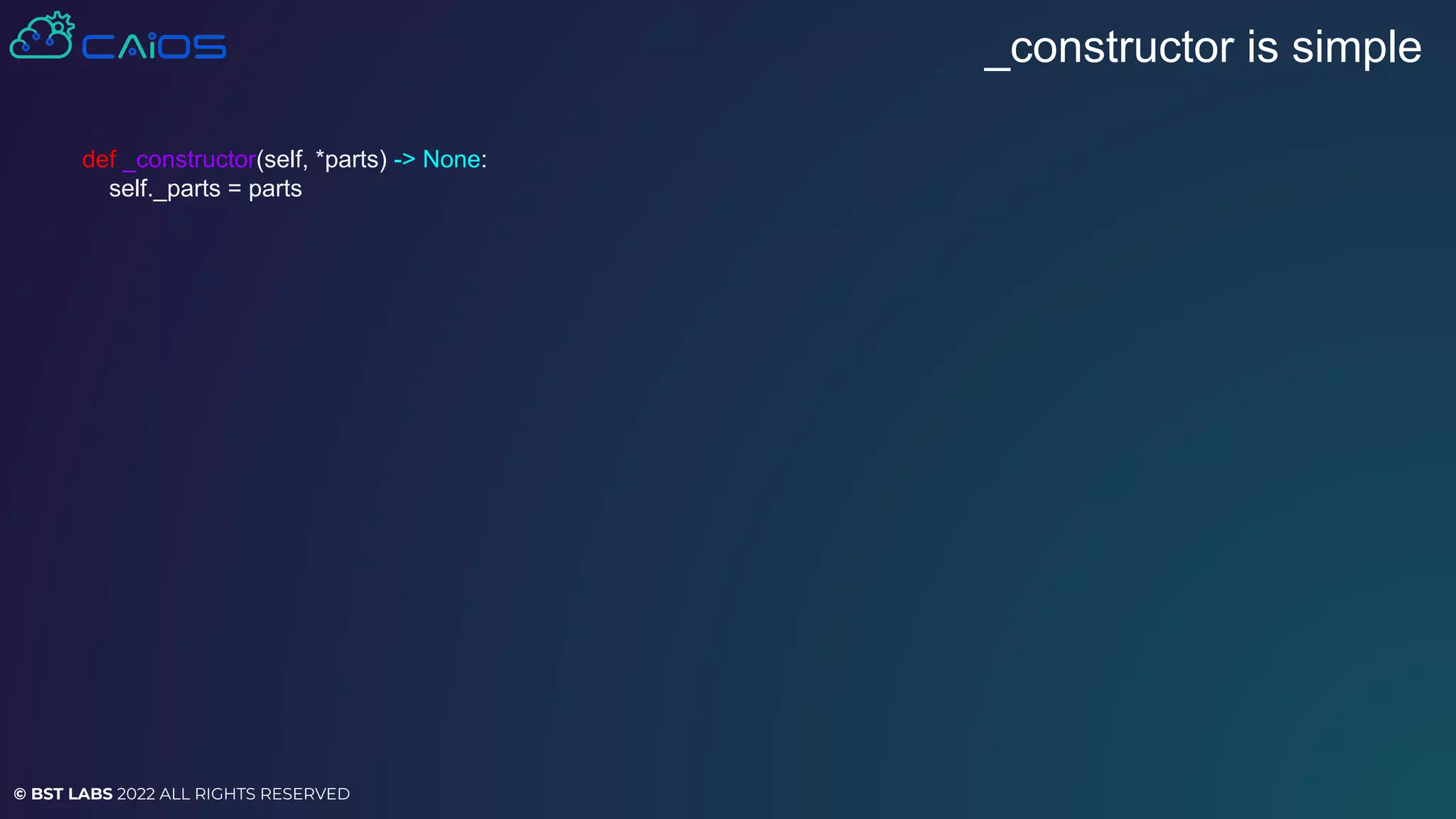
![© BST LABS 2022 ALL RIGHTS RESERVED
_make_method is where the real stuff is done
def _make_method(name: str, func: callable) -> callable:
> def _make_reduce(m: str, rt: type) -> callable: <-- Python Closure Gotcha
> def _make_foreach(m) -> callable: <-- Python Closure Gotcha
rt_ = signature(func).return_annotation
rt = get_origin(rt_) or rt_ # strip type annotation parameters like tuple[int, ...] if present
return _make_foreach(name) if rt is None else _make_reduce(name, rt)
# Top-down decomposition in action](https://image.slidesharecdn.com/pyjamas22genericcompositeinpython-221127080423-37f46473/75/pyjamas22_-generic-composite-in-python-pdf-15-2048.jpg)
